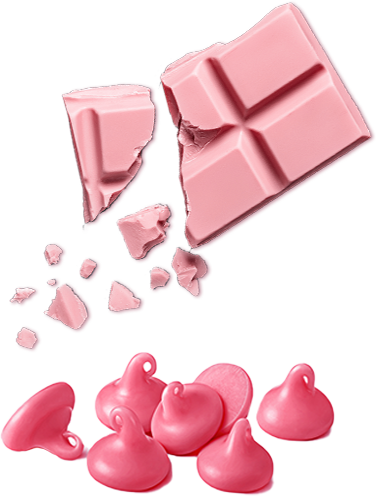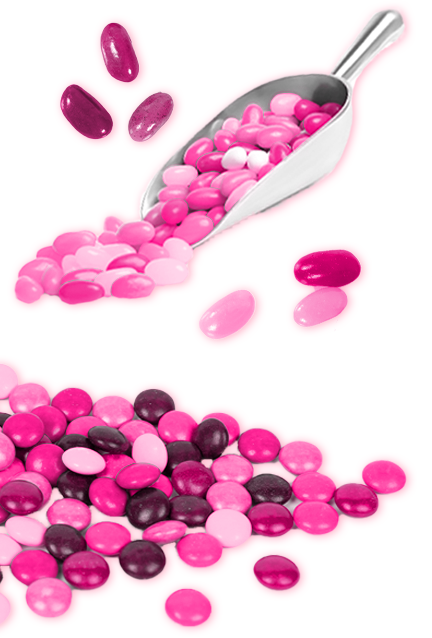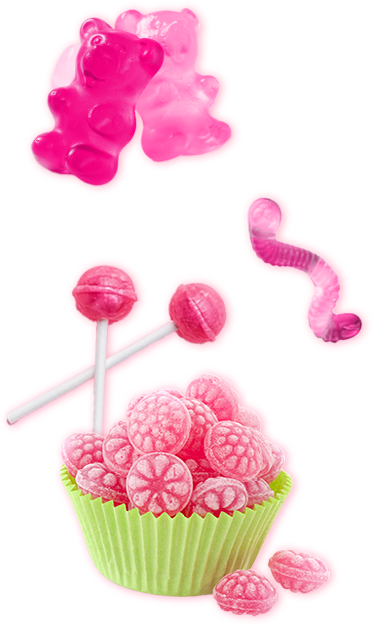Although Red 3 has safely been used in food and beverages for decades, this food additive has recently come under fire. In March 2023, California Bill 418 was signed into law, prohibiting the manufacture or distribution of four food additives in California, including potassium bromate, brominated vegetable oil, propyl paraben, and FD&C Red #3. Several other states have introduced bills matching the original text of Bill 418 but have yet to be passed into law. Although California’s ban does not take effect until January 1, 2027, brands across the country are already seeking alternatives to Red 3.
To successfully replace Red 3 in confections, it’s important to understand how Red 3 functions. Red 3 is a xanthene dye that gives a very vibrant, nearly neon pink shade. Like other synthetic dyes, it is highly concentrated, with usage rates in most applications at <100 ppm. Red 3 is generally not light stable and is also insoluble in low pH conditions.
A common list of Red 3 shade replacement options includes Red 40, beet juice, carmine, and anthocyanins such as purple sweet potato, radish, red cabbage, etc. Just like Red 3, each of these color sources come with their own set of stability parameters to take into consideration.
As mentioned, the primary format of Red 3 is a water-soluble dye, but color manufacturers can process the dye to be fat or oil dispersible, thereby allowing Red 3 to be used in coatings. If there is a desire to stick with synthetic colors, the closest option is Red 40 Lake. However, the effect is usually more of a salmon-type pink, dependent on your Red 3 target shade and the usage rate of Red 40 Lake.
The best options from a shade standpoint tend to be anthocyanins, beet, and carmine. For natural color sources that are naturally water-soluble, such as anthocyanins and beet, Sensient’s Microfine™ technology enables them to be used in oil-based applications. Pink Microfine™ and Berry Microfine™ are great choices for a Red 3 shade match. Standardizing or brightening your coating base with titanium dioxide or a clean label white alternative like Avalanche™ may help give a more overall brighter effect.


Beet in its primary format is not stable when exposed to heat or high water activity, so it would be best used in room temperature, high Brix syrup over the course of a production shift. SupraRed™ and other solutions in Sensient’s UberBeet™ portfolio are optimized for cost-in-use and heat stability to address these challenges.
Anthocyanins are another great alternative to Red 3 for panned confections. However, anthocyanins have a low pH and if the color sits in sucrose syrup for an extended period of time, this can result in an overall pH change of the syrup, thereby leading to inversion. Anthocyanins should be used quickly in sucrose panning but can be more forgiving an acidic dextrose or maltitol syrup. Additionally, each anthocyanin source gives a different red to pink shade, and has slightly different responses to processing parameters, so full testing should be done to monitor for fluctuations in shade.
Some factors that can help further contribute to this are a clear or white base (little yellowing) and the ability to get the pH as low as possible. Anthocyanins tend to be heat stable, so adding the color pre-cook is usually not an issue.
Another option for Red 3 replacement in gummies and hard candy is beet, but as discussed, the primary format of beet has heat sensitivity issues. Depending on the processing, a heat stable beet like SupraRed™ or Magna Ruby™ might be considered. These solutions also carry the added benefit of optimized usage rate, so incur a lower risk of texture or formula impact while still achieving a bold color. Using beet in the stabilized liquid format is preferred, as pre-solubilizing could lead to degradation from high water activity. Each beet source is unique in ratio of betacyanins to betaxanthins, with some sources leaning yellow and others leaning blue. This can be important to note when looking to replace the vibrancy of Red 3 specifically. Sensient’s broad portfolio of beets ensures we cover all shades to best achieve your target hue.
